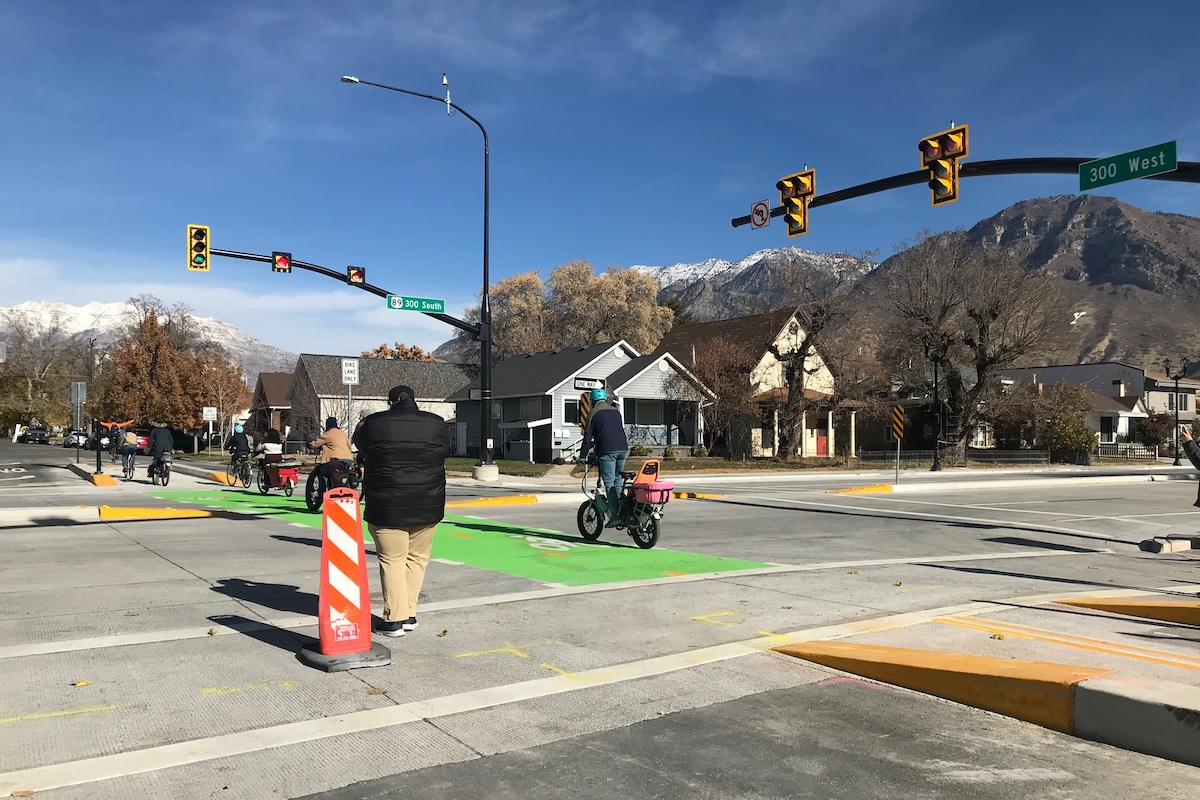“We’re very proud of the work we did that really breaks new ground in how we think about transportation on state routes,” said Barb Chamberlain, Active Transportation Division Director at WSDOT. “We know the transportation system of the future needs to be accessible and safe for everyone. The national recognition tells us many, many people believe this.”
Eighty projects from 37 state DOTs participated in the 2022 America’s Transportation Awards competition. The projects first faced off in four regional competitions, with the three highest-scoring projects from each region (a total of 12 projects) continuing on to compete for the final two national awards — the Grand Prize and the People’s Choice Award. Winning the People’s Choice award earned WSDOT $10,000 to support a charity or transportation-related scholarship program.
“This year’s America’s Transportation Awards competition consisted of the most diverse group of projects we’ve seen in all 15 years of the competition,” said Jim Tymon, AASHTO’s Executive Director. “The Top 12 alone included a public engagement tool, a road diet project, a memo of understanding between an entire region that will get life-saving and emergency supplies to communities during disasters, and our ultimate winners — an active transportation plan and a park project to reconnect a community divided by an interstate project several decades ago. These projects are absolutely representative of today’s state DOTs and the wide range of work they do for our communities every day.”
“Every one of those deaths is a tragedy for those who knew and loved them,” Chamberlain said. “The approach we took starts with the need to design for safety. We’re all pedestrians at some point in every trip, and making roads safer for pedestrian/bicyclist movement will make them safer for people driving, too.”

| Your local Volvo Construction Equipment dealer |
|---|
| Faris Machinery |
With more fatal and serious crashes occurring in places with both higher rates of poverty and a higher proportion of minorities, the plan also considers ways to correct for the effects of past infrastructure decisions on active transportation safety and mobility.
“We dig into the specifics of how to improve active transportation with WSDOT playing a key role on state highways that cut through places where people should be able to walk and bike safely,” Chamberlain said. “Completing networks across those jurisdictional boundaries, prioritizing safety and equity, changing those wide, fast, busy roads so traffic moves smoothly and safely — all of these will save lives and make better towns.”
Other highlights from the plan include:
- Provides a first-ever needs assessment of the state system for active transportation use
- Gives a cost estimate for walk and bike improvements on the state highway in population centers
- Introduces the concept of a statewide bikeways and trails network
- Uses “level of traffic stress” as a quantitative tool to evaluate the state system
- Addresses the burden of out-of-direction travel for pedestrians and bicyclists
- Sets performance metrics to monitor progress
- Lists strategies needed for WSDOT and partners to move ahead with the work




































































